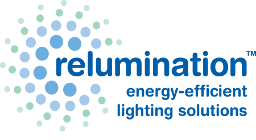Are you considering a lighting retrofit in your facility? LED lighting is a great upgrade, but it’s one that project managers are sometimes hesitant to make. The truth is, there are a lot of myths out there that should be dispelled. Let’s take a look at some of them so that you can understand why replacing your current lighting system with LED fixtures is the right move to make.
Myth 1: LED Lighting is Expensive
This is one of the more common myths, that LED light fixtures cost much more than fixtures of other types. These days, this simply isn’t true. Modern manufacturing processes have driven the cost of LED fixtures down—and operational costs are much lower, too. LEDs last longer, which reduces replacement costs, and they use up to 80% less energy than other types of lighting.
Myth 2: LEDs Produce Harsh White Lighting
While it may have been true many years ago that LED lighting systems typically produced bright white light, again, modern innovation has come to the rescue. Today, LED lighting systems come in a wide variety of color temperatures, which means that your new lighting system can be designed to produce light in whatever shade you need.
Myth 3: LEDs Won’t Work in Cold Environments
This pervasive myth has led many to assume LED lighting systems are unsuitable for outdoor applications or in production facilities where the temperature is kept low. However, the reverse is true: LED lights actually become more efficient in cold environments. This is because higher temperatures shorten the lifespan of electrical components—and that’s why incandescent bulbs burn out so quickly. LEDs work just fine in cold environments and may even last longer!
Myth 4: LED Lights Contain Hazardous Chemicals
This is a myth that carries over from compact florescent bulbs, which contain mercury. Because of that, florescent bulbs must be disposed of very carefully. No such thing is true of LEDs. These lights contain no mercury or other hazardous chemicals. What’s more, they’re easily recycled just like any electronic device.
Myth 5: LEDs Can Cause Eye Damage
While it’s true that bright white lighting can be a strain on the eyes, LEDs are no more dangerous than any other type of lighting system. In a commercial facility, the key is to design a lighting system that provides proper illumination in color temperatures that are easy on the eyes. Because LEDs are now available in a variety of brightnesses and shades, designing lighting that is easy on the eyes is a simple task.
Myth 6: Dimmers Won’t Work with LEDs
Perhaps this was true in the very earliest days of LED lighting, but today, it’s very possible to dim these lights. It is true that dimming requires a different technology than what is used for incandescent or florescent lighting. However, forward-phase and reverse-phase dimmers are available to provide with the dimming effect you’re looking for.
Want to learn more about how making the upgrade to LED lighting can benefit your facility? Contact us so that we can discuss your lighting needs.
